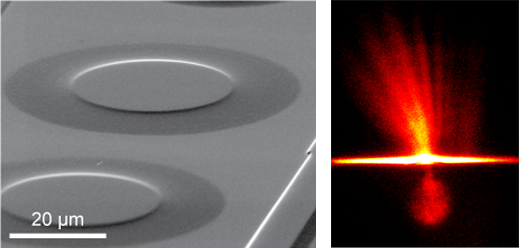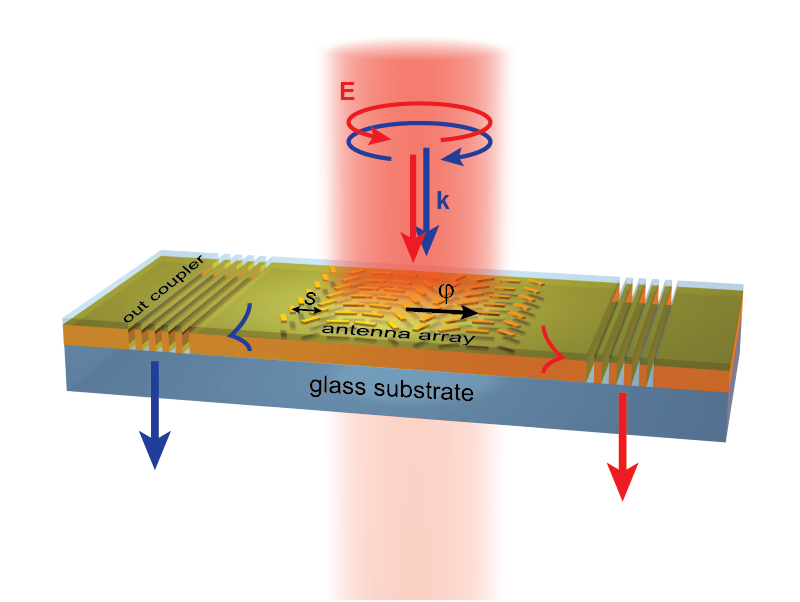Modern communication technology based on light as information carrier has proven itself to transmit large amounts of data in very short time. Limiting factors for this kind of data transmission and processing occur, for example, at the interface between photonics and electronics. The switching frequencies of electronic components are in the range of a few gigahertz, which is significantly below the light frequency, leading to a strong mismatch. Here, plasmonic elements provide a solution to bridge that frequency mismatch and allow efficient coupling between electronic excitations and light.
In plasmonic components, the light is coupled to the quasi-free electrons of metals, which leads to high field strengths near the metal surfaces. These so-called surface-plasmon-polaritons can be located on nanoparticles or propagate along surfaces. The combination of these properties opens up new possibilities in the field of optical sensors, light conduction along interfaces and light manipulation in small spatial areas.
Our group studies the design of plasmonic metamaterials and their interaction with the near-field environment. Thus, for example, direction-dependent light couplers can be realized that react sensitively to special light polarizations or to develop detectors that react extremely sensitively to changes in the near-field environment.



